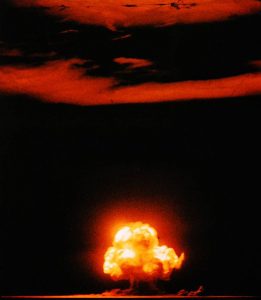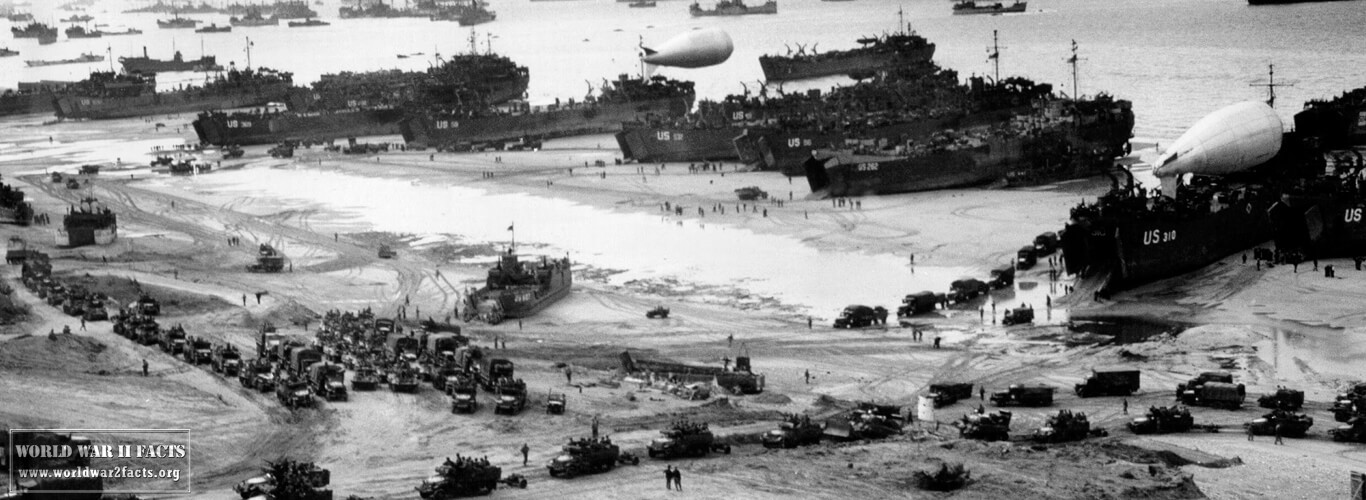 Albert Einstein and Leo Szilard in 1946, reenacting the signing of their letter to President
Albert Einstein and Leo Szilard in 1946, reenacting the signing of their letter to PresidentBefore the start of World War II, Albert Einstein sent a letter to the U.S. president of the day, Franklin D. Roosevelt. Einstein and other scientists told Roosevelt that Nazi Germany was purifying Uranium-235, with the possible and probable goal of building an atomic bomb. Shortly after that, the U.S. government began a project, at the time only known as “The Manhattan Project”. In simplest of terms, the goal of the Manhattan Project was to find a way to build a viable atomic bomb.
Enriched Uranium
The first and also most complicated part of making an atomic bomb is creating enough “enriched” uranium. The uranium is necessary to sustain a chain reaction in the process of nuclear fission. Back then it was very hard to extract uranium-235 from the uranium ore, the ratio of conversion from ore to metal being 500:1.

Once the process is complete, the refined ore is 99% uranium-238, which can’t be used for the atomic bomb. To make the process even more difficult, both U-235 and U-238 are isotopes which means that they’re nearly identical and extremely hard to tell apart. No chemical method can separate the two of them, they can only be separated using mechanical methods.
During the Manhattan Project, an enormous enrichment plant was setup at Oak Ridge in Tennessee. Harold Urey and other scientists from Columbia University came up with an extraction system that used gaseous diffusion, Ernest Lawrence utilized a magnetic separation process to separate the two isotopes.
The next step was to use a gas centrifuge that would separate the lighter U-235 from the heavier U-238. Once the preparation of the uranium was done the next step was to do a practical test of atomic fission, or in layman’s terms – splitting the atom.
Testing the Atomic Bomb
From 1939 to 1945, with over $2 billion invested into the Manhattan Project, during that time a system was created for refining uranium and creating a functioning atomic bomb by some of the most brilliant minds of the time.
Once all of the preparations were done with, a prototype code-named The Gadget was created to actually test if the atomic bomb would work. In the morning of July 16, 1945, The Gadget was ignited and ushered in the Atomic Age. The orange blaze of the explosion shot upwards at 360 feet (110 meters) per second. The mushroom cloud, characteristic of atomic bombs formed at 30, 000 feet (9144 meters). Underneath the fireball only fragments of a radioactive glass with a jade green hue, that formed as a result of the enormous heat remained, everything else turned to ash.
The light that was released during the reaction was so strong that residents of faraway communities would swear that the sun came up twice on that day. More astonishing is the fact that a blind girl saw the flash at a 120 miles (193 kilometers) distance from the explosion. The scientists that created the bomb, upon witnessing the explosion had mixed reactions. Isidor Rabi felt that humankind now had the potential to become a threat to the world it inhibited. Oppenheimer quoted Bhagavad Gita: “Now, I am become Death, the destroyer of worlds.”
After seeing the result of their work many of the participants of the Manhattan Project signed petitions not to use the atomic bomb again, their protests and objections however, fell on deaf ears.
Manhattan Project Video
Employment of the Atomic Bomb
A month after Trinity, the code-name for the first atomic bomb test, two nuclear bombs were dropped on the Japanese cities of Hiroshima and Nagasaki. The official reason for doing so is that it would instantly end the war, and in doing so saving countless American lives. The immediate deaths of the explosions are estimated around 100,000. While this number is enormous, it is estimated that an Allied invasion of Japan would have resulted in just as many casualties, if not more.




